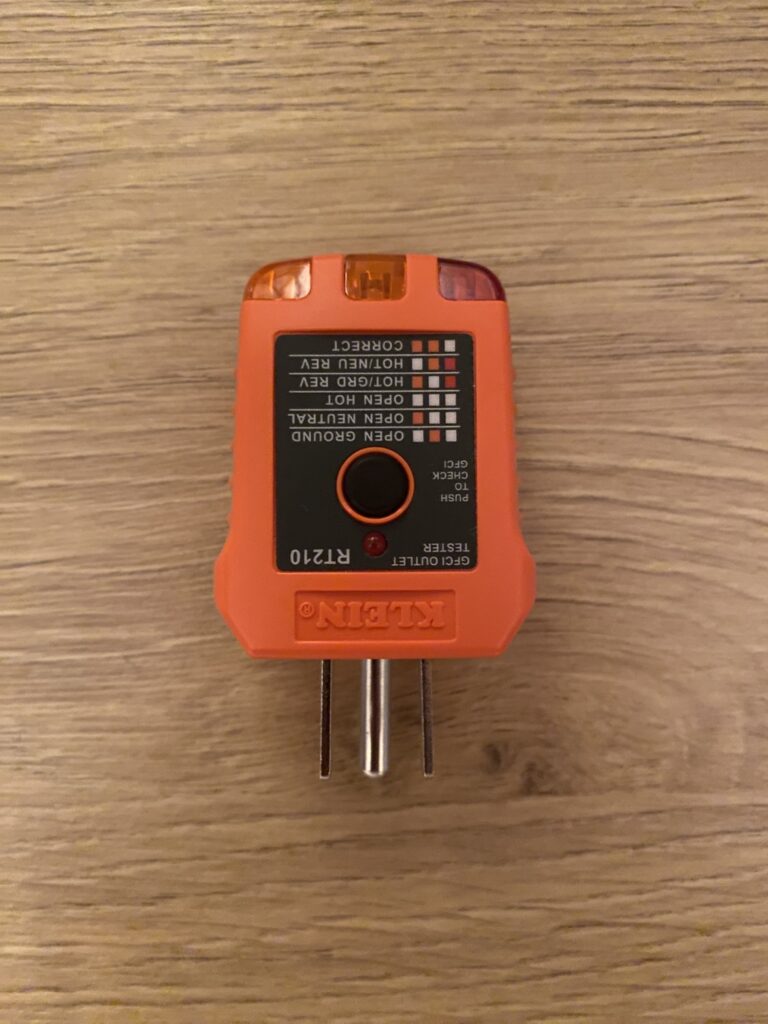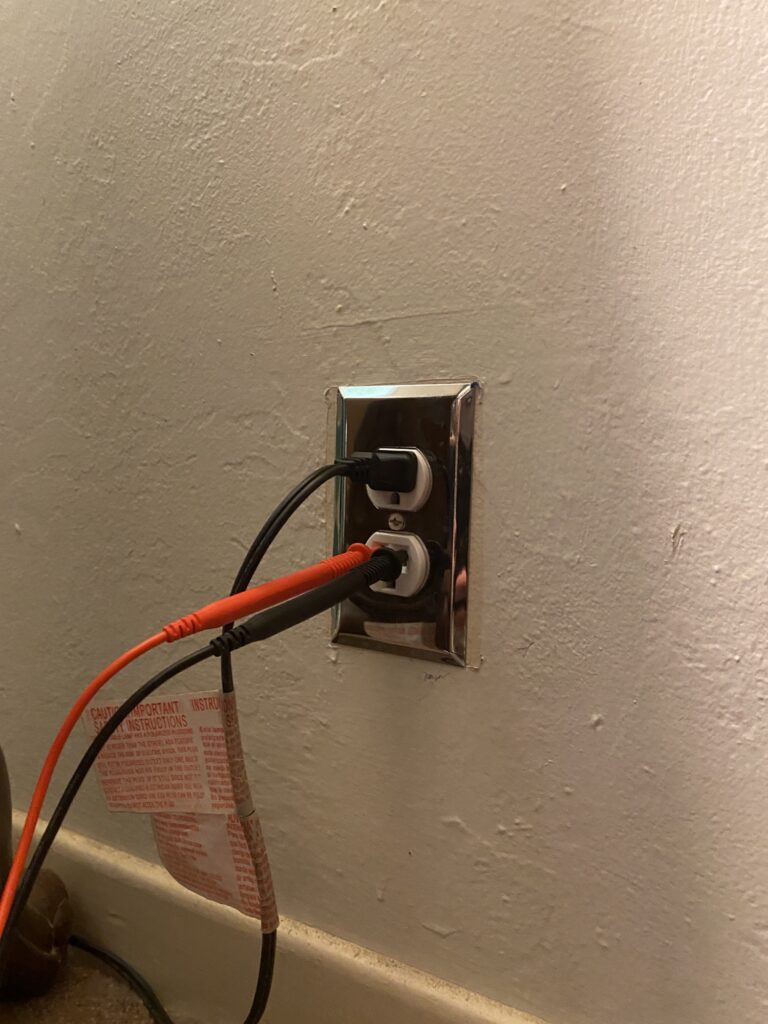
Recently over here at Pancake HQ we’ve been having some weird electrical issues. Our neon sign and television had turned themselves on and off intermittently, our lights were flickering and the modem kept rebooting itself. We wondered just what on the world was going on!
Our home base was built a long time ago and remodeled by a bunch of DIYers, which… of course, we respect the hustle… But we have known forever that there was some messed up stuff going on in our walls.
We decided to get in there and figure it out! Here are the steps to diagnosing an electrical issue if you don’t know anything about electricity!
Understand The Issue
No matter what the issue is, most likely you’re going to need professional help unless you are experienced with working with electricity. There are several potential places issues arise. They can happen with your outlets (loose connections, dead outlets, dead switches), connections between outlets (frayed wires, rodents etc), at your electrical panel (loose connections, failing breaker switches) or at the service connection (loose or damaged connections), and finally with your utility company’s equipment that brings power to your utility pole.
If the problem involves your panel, wiring or outlets you may need an electrician. If it’s your service connection or outside of your home and panel, you will need your utility company. It’s often a good idea to start with your utility company since they will rule out their part of the problem for free. After speaking with them, talk to an electrician who is likely to try to diagnose the problem before driving out to look at it. In my experience they were able to point me towards possible causes and ultimately to the utility company and to contact the company that installed my electrical panel.
While you may feel comfortable touching an outlet, it is fully possible to kill yourself messing with the electrical panel inside of your home. Use caution and leave it to the professionals. The purpose of this guide is to help you determine who to call.
Start with defining the issue. Do you have flickering lights, tripped breakers, burning electrical smells, sparking, or smoke, loose outlets, or appliances turning themselves on or off intermittently?
Once you know what the problem is, you need to find out if it’s happening on just one circuit in your house or across multiple circuits.
The way your circuits are wired might not match up with the way your rooms are laid out. For example in my house one outlet in the kitchen, an outlet in the attic and four outlets in my office share a circuit. These rooms are close together but there are outlets near by that happen to be on a completely different circuit. The kitchen has four other outlets on a completely different circuit, and the living room, which leads to the kitchen is on a third circuit. In fact I walk right past an outlet between my office and the kitchen that is not on my office circuit or the kitchen circuit. You will want to make a map or a list which will help you when you tell the professional what’s going on.
Check For Overloads
Once you have your list of which circuits go where and how many amps that circuit is rated for, check to see how many amps your appliances might be using. In general, remember that a circuit is typically rated for 15 or 20 amps. The circuits are labeled with the number of amps they can handle.
To find out how many amps an appliances uses, divide it’s wattage by 120 (in the US). This maximum amount of power (15 or 20 amps, maybe more) is not per outlet, but the total amount of power that you can provide to all appliances on that circuit. Many appliances have stickers that give you their running wattage, however appliances will surge when they first kick on. This surge demand can greatly exceed the running wattage, so if your circuit is rated for 20 amps (2400 watts) you want to stay well below it. Unusually large appliances like your Aircon, level II car charger or oven draw a lot of power and will often have their own dedicated circuit that can support 30, 40, or even 50 amps however it’s not uncommon for appliances like dishwashers or washing machines to share circuits even though they draw a lot of power. Devices like space heaters or hair dryers, even small ones, can use up to 1500 watts. In a large room with a 20 amp circuit you may plug in 2 space heaters or one space heater on when someone plugs in a hair dryer – and already be using 3000 watts of power without accounting or computers, lamps or other devices plugged in. This will usually trip your circuit breaker.
Check for Wiring Issues

Pick up one of these testers for $10 and check for common wiring issues. Each one will have a sticker on the tester that tells you which issue may be present. Please note: If you have an older home with a two wire system, open ground is a common fault, but unlikely to be the cause of flickering lights and power fluctuations. There are steps you can take to make your home safer if you don’t have a ground connection, but in general this was how homes were built in the olden days.
Isolate the problem:
Start in the room where you’re having the issue. Determine what circuits are involved and which breaker they go to. This can involve flicking breakers off to determine which outlets go dead when you flip the switch. Unplug your appliances. If the problem persist, then it is probably not anything on that circuit. Alternatively you can turn off the entire circuit at the panel. Using an LED light or a UPC with a trim / boost feature may be helpful as it can provide audio and visual clues that you are having power fluctuations.
If the problem goes away, plug in one device at a time to see which of them could be causing the problem. This is a lengthy process as power fluctuations can come and go for long stretches of the day.
Check For Loose Connections
Loose connections can cause arcing, dead outlets, and other issues. In my case, there were several outlets that needed to be re-wired due to being worn out. I was able to get help from my father in law who has a lot of experience with stuff like this and he made sure to properly re-wire the outlets that were of concern. However properly re-wiring my outlets did not resolve the issue.
When we initially opened the outlet I noticed that the outlets themselves were rated for 15 amps but on a 20 amp circuit. I replaced all of the 15 amp outlets with 20 amp outlets.
I found out it is generally acceptable to have an outlet with a lower rating than the circuit but not higher. In that case you may plug in a 20 amp device into a 15 amp circuit and overload it. In the US 20 amp plugs have an extra bar that extends from the left prong of the plug, while it’s uncommon, you may find some power tools like rotary hammers or portable air conditioners that use 20 amp plugs so while you’re not likely to come across it, you generally want to make sure the outlets on your circuit are rated for the amperage of the circuit or lower.
Monitor the Voltage of Your Problem Circuits
I used a Klein MM400 Multimeter and shoved the leads into the outlet like so:

Set the multimeter to V for volts. When you get it to read consistently set the multimeter to MIN and let it sit for 15-30 minutes. Ideally a home in the US will range from 114 to 126 volts. Outside of these ranges there are issues.
A voltage drop is usually caused by a loose neutral. It could be a neutral wire on that outlet, on that circuit (at the panel breaker) or at the service (the connection from the utility pole to your home).
Other things that can cause voltage fluctuations are drawing more power than your service connection is rated for. It can also happen if your neighbors are all pulling more power from the utility connection can provide at the pole.
If you’re having voltage drops on just one outlet you may have a loose neutral wire on that outlet. If it’s the whole circuit, an electrician can come out and check your breaker switch. If you’re having this problem throughout your home, it is time to call the utility company and have them check your connection.
A loose positive connection (hot wire) will simply cause power loss.
Check With Your Neighbors
If it is a problem with your utility, other neighbors on the same utility pole as you may be having the same issue. Locate the pole you draw power from and start knocking on doors. Ask them of they’re experiencing failing appliances, flickering lights or other similar issues.
At the end of the day, Science tells us that electricity is the white man’s voodoo and how it works is sort of like Harry Potter’s wand or the machine Ghost Busters use to suck up ghosts, and that is to say, nobody really knows. If you’re having weird issues, it could be happening anywhere and at the beginning you might think it’s happening in your imagination.
The important thing to remember is that you can help the professional you will need help from by checking your connections, determining what circuits the problem is affecting, and knowing who to call.
That’s it from Pancake HQ!